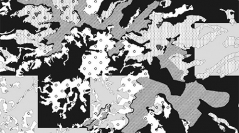

 Cryptogamie, Bryologie
36 (1) - Pages 3-17
Cryptogamie, Bryologie
36 (1) - Pages 3-17The conservation of rare and endangered species like Orthotrichum rogeri Brid. requires a precise knowledge of their ecology and distribution. However, the scarcity of financial resources and the inadequacy of chorological data difficult the design of efficient conservation policies. In this context, species distribution models (SDM) can provide useful information to apply conservation measures over large areas like Auvergne region, France (26,000 km2). Unfortunately, the use of SDM to assist the introduction of conservation measures is uncommon in bryology. O. rogeri is a rare and poorly known moss at the national scale which is well represented in Auvergne. The European Union through the "Habitats and Species Directive" made its protection compulsory. The aim of this work is to use SDM to improve our current knowledge on O. rogeri distribution in order to provide guidance for designing conservation measures. To do so, we first designed a survey to gather presence/absence data and then fit logistic regression model. Model accuracy was assessed using previous knowledge on species occurrences (which have not been used in SDM). The output of the SDM leads us to an improved understanding of the chorology of O. rogeri. Our results showed that this species is clearly too scarcely represented in the Natura 2000 regional network and pointed to the need of targeted surveys. Natura 2000 sites are either too severely fragmented and/or too small to allow efficient conservation of O. rogeri and the suite of related remarkable epiphytes. We suggest that slight modifications of current outline of Natura 2000 sites to allow the integration of several known populations. O. rogeri shows some paradoxical habitat requirements, in some areas it is strongly linked to anthropogenic habitats while in others it is linked to ancient woodlands without anthropogenic activities. Disturbance regime is identified as of prime relevance for the conservation of appropriate habitats. Due to the contrasted requirements of the species diverging conservation strategies could be adopted. Besides, taking into account the various scenarios offers the possibility to anticipate environmental changes caused by global warming and its likely effect for the successful implementation of conservation measures.